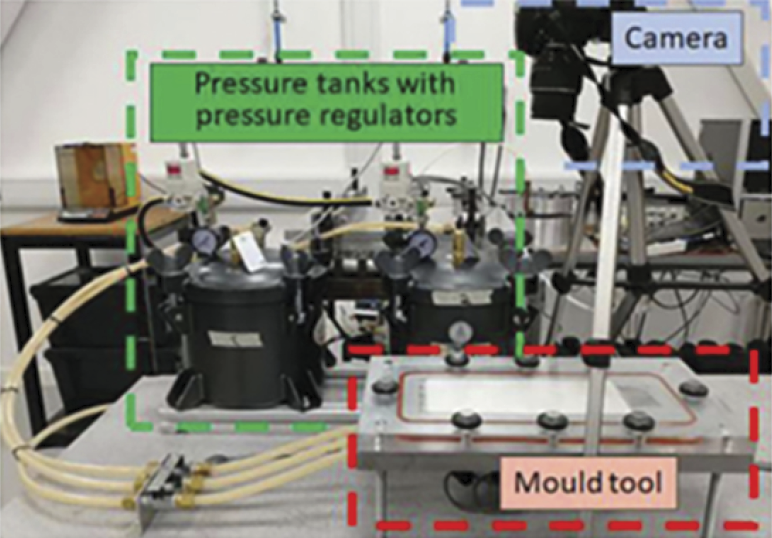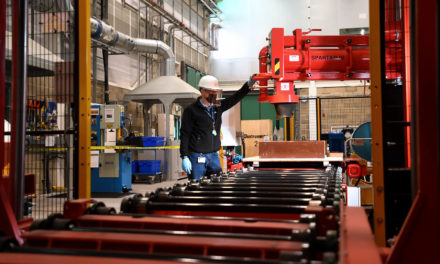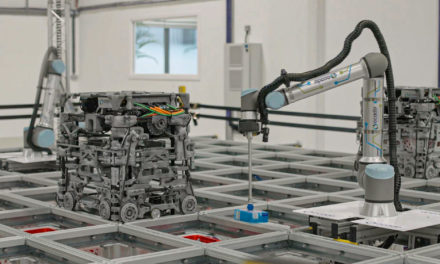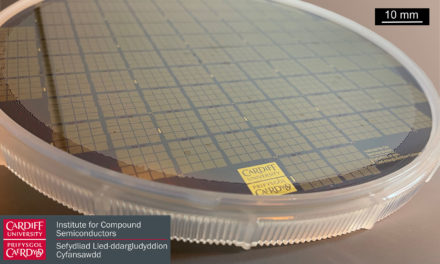Future Composites Hub – Delivering a step change in composites manufacturing
Future Composites Manufacturing Research Hub
Underpinning the development of next-generation processes to reduce cost, increase performance and improve sustainability.
Nick Warrior Professor of Mechanical Engineering at the University of Nottingham and Director of the Future Composites Manufacturing Research Hub

High rate deposition and rapid processing technologies
Since 2017, the Hub has built on the success of the EPSRC Centre for Innovative Manufacturing in Composites, with a vision to develop a national centre of excellence in fundamental research for composites manufacturing – delivering research advances in cost reduction and production rate increase whilst improving quality and sustainability.
To match these priorities with UK capability, we identified the following Grand Challenges, around which we will conduct a series of projects:
Enhance process robustness via the understanding of process science to deliver and accelerate growth
Develop high rate processing technologies for high-quality structures
A key aspect to delivering the Hub’s Grand Challenges is ensuring our Core Projects, Feasibility Studies and Fellowships can work towards the same goals of meeting the Hub’s core objectives. In 2019, after consultation with the Hub Knowledge Exchange Committee (KEC), we launched the Synergy Promotion Fund to run alongside our Core Projects and Feasibility Studies.
The Synergy Fund provides funding to enable the development of synergies between past and ongoing Hub research activity and new academic contributors. The grant aims to promote collaborative activity for emerging and novel research.
Following on from the collaborative opportunities created from our smaller investments awarded in 2019-20, in February this year, we launched a further Synergy Promotion call with a budget of £100k per academic partner. New projects will be announced in May 2022, and we expect them to start by September 2022. This Synergy Fund is a turning point to shift our focus to industrial and academic synergy to balance our research portfolio. This will further accelerate our efforts to address the growing need for more economical, practical, and environmental composite manufacturing. l
SUCCESS STORIES
Recent projects in composites forming research
“Simulating the effect of fabric bending stiffness on the wrinkling behaviour of biaxial fabrics during preforming”
In a recent project, experiments and numerical simulations were performed to investigate the forming induced wrinkling behaviour for two bi-axial fabrics, a balanced twill weave fabric and a pillar-stitched NCF. Controlled wrinkle patterns were generated by introducing a gap between the blank holder and die during experimental hemisphere forming tests. Results indicate that using a linear bending model with a constant bending stiffness produces unrealistic wrinkle patterns in the fabric plies. The maximum principal curvature was identified as a suitable measure to determine the radius of preform wrinkles enabling them to be isolated from areas of fabric bridging. Results show that the distribution of the maximum value of the principal curvatures coincides with the longitudinal direction of wrinkles.
Recent projects in liquid moulding research
“Bayesian inversion algorithm for estimating local variations in permeability and porosity of reinforcements using experimental data”
A novel Regularising Ensemble Kalman filter algorithm based on the Bayesian paradigm was applied to Resin Transfer Moulding processes to estimate local porosity and permeability of fibrous reinforcements using measured values of local resin pressure and flow front positions during resin injection. The virtual and laboratory experiments demonstrated that the proposed methodology could successfully discover defects and estimate local porosity and permeability with reasonable accuracy. The algorithm also provides confidence intervals for the predictions and estimations of defect probabilities, which are valuable for analysing the process.
Recent projects relating to advances in thick composites
“A numerical study of variability in the manufacturing process of thick composite parts”
A study conducted by the University of Nottingham and the University of Bristol examined the variability in the manufacturing process of thick composite parts. Consolidation of a prepreg layup to a target thickness is critical to achieving the required fibre volume fraction and dimensions in a composite part. Experiments show that different processing conditions lead to varying compaction levels and variability in the thickness. Analysing layups and processing conditions suggested several strategies to control target thickness and variability. The results provided a better understanding of composite manufacturing and can be used to give an informed choice in the design for the manufacture of composite structures.
To achieve our vision, we identified five research priority themes in collaboration with industry partners and the Composites Leadership Forum:
- High rate deposition and rapid processing technologies
- Design for manufacture via validated simulation
- Manufacturing for multifunctional composites
and integrated structures - Inspection and in-process evaluation
- Recycling and re-use
These themes guide the research involved in our feasibility and core studies.
We have successfully funded:
- 6 Core projects
- 24 Feasibility Studies
- 3 Innovation Fellowships
- 4 Synergy Promotion Projects
“Experiments show that different processing conditions lead to varying compaction levels and variability in the thickness”
Above: Results indicate that using a linear bending model with a constant bending stiffness produces unrealistic wrinkle patterns in the fabric plies.
Above: A novel Regularising Ensemble Kalman filter algorithm based on the Bayesian paradigm was applied to Resin Transfer Moulding processes to estimate local porosity and permeability of fibrous reinforcements using measured values of local resin pressure and flow front positions during resin injection.






